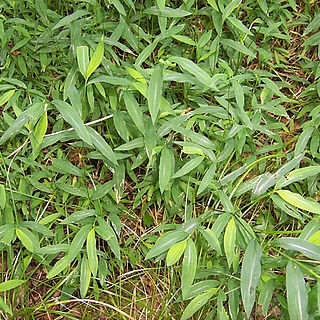Rambling perennials, or sometimes annuals. Leaf-blades linear to lanceolate, narrowed at the base and often with a short false petiole; ligule short, scarious. Inflorescence terminal, comprising up to 25 subdigitate racemes, these rarely solitary or with a short common axis; racemes fragile (very rarely tough), seldom conspicuously hairy, bearing paired spikelets, those of each pair alike; internodes and pedicels linear or rarely inflated. Spikelets dorsally compressed; callus obtuse; lower glume herbaceous to cartilaginous, the back flat with a median groove and the margins sharply inflexed, acute or notched at the tip; upper glume acute or with a short awn point; lower floret ♂, reduced to a hyaline scale, or suppressed, these variants often mixed in the same panicle; upper lemma hyaline, linear to cordate, often minute, bidentate to bifid, with a glabrous awn from the sinus; stamens 3, rarely 2; caryopsis narrowly ellipsoid to lanceolate, dorsally flattened.
Spikelets alike (though the pedicelled sometimes a little smaller), paired, one sessile, one pedicelled, dorsally compressed, the callus obtuse.
Inferior glume herbaceous to cartilaginous, the back flat with a median groove, sharply inflexed on the flanks, acute to bidentate.
Inflorescence of 1–many subdigitate racemes; racemes fragile, sparsely pilose, with filiform to clavate internodes.
Inferior floret very variable, male, reduced to a hyaline scale or suppressed.
Superior lemma linear to cordate, entire to bifid, with a glabrous awn.
Superior glume often shortly awned.

